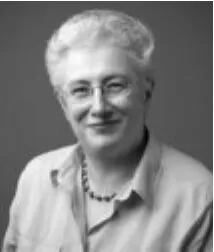全科医学中的心理健康病案研究 (一)——惊恐发作
2012-06-13GrantBlashkiFionaJudd
Grant Blashki,Fiona Judd(著),杨 辉 (译)
全科医学中的心理健康病案研究 (一)
——惊恐发作
Grant Blashki,Fiona Judd(著),杨 辉 (译)
惊恐发作;全科医学;精神卫生服务

戈兰特·布拉斯基,医学学士,医学博士,澳大利亚皇家全科医生学会会员,澳大利亚公司管理硕士,澳大利亚Melbourne大学全球健康研究所副教授,澳大利亚全科医生学会考官。他是一名优秀的全科医生,同时致力于初级卫生保健和心理健康的研究,在国际杂志上发表80余篇学术文章,是《全科医学中的精神病学》的首席作者。他是澳大利亚心理健康服务改革项目的评价专家,开展了多个全科医学中心理健康技能培训的随机对照研究。

菲奥娜·贾德,医学学士,医学博士,心理医学学历,澳大利亚新西兰精神病医生学会会员,澳大利亚Melbourne大学精神病学系教授,墨尔本皇家妇女医院妇女心理健康中心主任。她是临床精神病学家,在医学与精神病学的共病研究中卓有建树,并致力于孕期、绝经期、中年转换期的心理学问题研究。在国际杂志上发表160余篇文章,是《全科医学中的精神病学》和《综合医院中精神病学研究手册》的合作作者。
译者按:心理疾病指的是各种程度和类型的行为和心理异常状态。焦虑是最常见的心理疾病之一。心理疾病在人群中的流行率很高,如澳大利亚16~85岁成人中有20%在过去的1年中经历过心理问题。处于事业起步和建立家庭阶段的年轻人的心理问题更为普遍,14%的澳大利亚儿童和青少年存在心理疾病。
在全科医学服务中,心理问题是非常常见的。全科医生往往是第一个接触病人心理问题的卫生工作者,2008—2009年,澳大利亚132万次全科服务中涉及了病人的心理问题,而且数量呈现持续的增长趋势[1-2]。根据沙良等对上海某医院门诊病人的流行病学调查,中国门诊病人中有51.3%有惊恐发作的症状,13.4%的门诊病人确诊为惊恐发作[3]。全科医生怎样识别和诊断惊恐发作?怎样在全科医学服务场所管理惊恐发作?布拉斯基副教授和贾德教授在这里提供了一个在全科医学场所管理惊恐发作的案例分析。
1 病史
朱某,女,23岁,在澳大利亚学习的中国学生,主修商业。今天早晨到全科医学诊所看病的原因是在期末考试过程中感到头晕、浑身发抖、呼吸困难。症状持续大约10 min,自己感到很害怕,担心自己会死掉,只能中途退出考试。在医生面前,她显得很痛苦,想知道自己出了什么问题。
2 其他病史
这种情况的发作是第二次了。上一次是2个月前,那时候她正在拥挤的城铁车厢里,中途不得不下车,30 min后症状才缓解。她没有其他既往病史,只是服用口服避孕药,也没有发现任何过敏史。她每天抽10支烟,喝4杯咖啡,为的是能在学习中保持清醒。她不喝酒。
3 身体检查
医生在看病时,发现病人面色苍白,出汗,双手紧握。生命体征显示呼吸20次/min,脉搏88次/min,血压115/80 mm Hg,体温正常。病人双手湿冷,发抖。心血管和呼吸系统体检正常。未发现小腿压痛,也没有甲状腺眼病症状。
4 提问
4.1 问题1:可能的心理学诊断是什么?
4.2 问题2:应该考虑哪些躯体疾病?
4.3 问题3:惊恐发作能发展成哪些继发的心理学问题?
4.4 问题4:可以采用哪些治疗方法?
5 问题解答
5.1 问题1的解答:可能的心理学诊断是惊恐发作。惊恐发作是指有明确发作期的强烈恐惧和不适。诊断标准是突然出现4个及以上下列症状,并在10 min内症状最明显:
-心慌,心悸,心跳加快;
-出冷汗;
-发抖,痉挛;
-感觉呼吸短促或窒息;
-感到憋闷,透不过气;
-胸痛或不适;
-恶心或腹部疼痛;
-感到头晕,走路摇晃,头重脚轻,或者晕倒;
-现实感丧失 (感觉不是生活在现实中)或人格解体(感到自己被拆散);
-害怕失去控制,或害怕变得疯狂;
-害怕死亡;
-感觉异常 (麻木感,针刺样的感觉);
-发冷,或皮肤有灼热感。
5.2 问题2的解答:对惊恐发作的诊断往往通过病史就能得到阳性诊断,而且往往不需要采用排除诊断法。然而,全科医生应该对一些重要的躯体健康问题进行鉴别诊断,比如甲状腺机能亢进、二尖瓣脱垂、阵发性心动过速、低血糖、扁桃体炎发作,还有很少见的嗜铬细胞瘤。过度的咖啡因摄入,或者过于刺激的饮食也可以造成惊恐发作。可以做一些相关的检查,如全血、尿素、电解质、肌氨酸酐、肝功能、空腹血糖、甲状腺功能等检查。根据临床表现可以慎重考虑其他检查,如心电图 (特别是胸痛症状明显的病人)、超声心动图、脑部CT、脑电图、动态心电图、尿儿茶酚胺、毒品检测等[4-5]。
5.3 问题3的解答:有些惊恐发作的病人能发展成为恐慌症。恐慌症是指周期性、不可预料地发生惊恐发作。惊恐发作还可能发展成为期待性焦虑,即病人担心再次发生惊恐发作。惊恐发作还可能发展成为广场恐惧症,一种在某场所或情形下担心不能逃脱的焦虑状态,或者担心在惊恐发作或类似症状发生的时候不能得到帮助的一种焦虑状态。有这种焦虑的人总是避免某些场合,比如自己一个人在室外或自己一个人在家里、人多的场合、乘坐汽车、公共汽车或飞机旅行、站在桥上、乘坐电梯等。此外,很多经历过惊恐发作的人会过于担心自己的健康,即过度健康焦虑,把任何躯体的症状都当作疾病,不断地找医生看病,期望医生能打消他们的顾虑[4-5]。
5.4 问题4的解答:治疗惊恐发作的第一步,是做出诊断,明确排除躯体疾病。而且要明确能加重惊恐发作的因素,如咖啡因摄入过多,如果有这些因素,应该劝告病人停止使用。要消除病人的疑虑,并对病人进行教育,告诉病人惊恐发作的原因,这一点是很必要的。要跟病人解释,这种心理问题是过度地激活了交感神经系统对有威胁情形做出的反应 (即“战斗-逃跑”反应)。教会病人放松和减压的方法,减少工作和家庭生活事件中的压力,这对病人也很有帮助。有充分证据表明,不少心理学治疗方法对惊恐发作和恐慌症有很好的疗效,这些治疗主要针对两个方面,即控制惊恐发作和克服逃避行为。最著名和有效的方法是认知行为治疗,包括教会病人缓慢呼吸的技术,防止换气过度;纠正病人的错误想法,如不要把人体正常的“战斗-逃跑”反应当作严重的躯体疾病。对于有广场恐惧症的病人,一旦病人的焦虑有所控制,则可以采用逐级暴露法进行治疗。抗抑郁药,如选择性5-羟色胺再摄取抑制剂 (SSRI类)可以减少或“阻断”惊恐发作。不过对苯二氮的使用是存在争议的,这种药一方面在短期内有治疗效果,或者可以作为辅助用药,但另一方面要慎重使用,因为它有成瘾的危险[4-5]。
1 Austin D,Blashki G,Barton D,et al.Managing panic disorder in general practice[J].AustFam Physician,2005,34(7):563-571.
2 Blashki G,Piterman L,Judd F.General Practice Psychiatry[Z].North Ryde,NSW,McGraw-Hill Australia,2006.
3 Department of Health and Ageing.National Mental Health report 2010:Summary of 15 years of reform in Australia's Mental Health Services under the National Mental Health Strategy 1993—2008 [Z].Commonwealth of Australia,Canberra.
4 AIHW.Mental Health Services in Australia 2007—2008[Z].Australia Institute of Health and Welfare,Canberra,2010.
5 Liang Sha,Jianlin Ji.Panic attack in outpatient department of hospital in Shanghai[Z].National Anxiety Conference,Dalian China,2009.
译者注:“战斗-逃跑”反应(fight or flight reaction)是哈佛大学心理学家Walter Cannon提出的理论。这是一种人体对危险情况所做出的正常反应。指当人面对挑战或危险时,下丘脑刺激和启动交感神经系统分泌肾上腺素,使心跳加快、瞳孔放大、身体出于激发状态,准备跟这个挑战或危险作战(fight)或逃跑(flight)。肾上腺素的分泌是不受人的主观意识控制的,也就是非理性的反应。肾上腺素能够提高心率、加快呼吸、促进血液从皮肤和内脏流到肌肉。焦虑的很多症状是人体正常的“战斗-逃跑”反应造成的,这些症状包括处于警惕状态、呼吸加快、心动过速、身体发抖、出冷汗等。
(本文编辑:闫行敏)
【Introduction of the Column】 The Journal of Chinese General Practice and Monash University have successfully established Murtagh's General Practice Case Studies.Now the Journal presents the Column of Case Studies of Mental Health in General Practice,with academic support from Australian experts in general practice,psychology and psychiatry from Monash University and the University of Melbourne.The Column's purpose is to respond to the increasing needs of mental health services in China.Through study and analysis of mental health cases,we hope to improve understanding of mental illnesses in Chinese primary health settings,and to build capacity of community health professional in managing of mental illnesses in general practice.
Managing mental illnesses is no longer a narrow task of institutionalized psychiatry services.General practice is often the first contact of mental health problem.General practitioners have more opportunity and more potential to help patients suffering from mental illnesses.Ideally,patient-centred and whole-person approach in general practice is the best way to maintain and improve the physical and mental health of residents.In China,mental health services,especially that at community level,could be strengthened.Knowledge and skills of mental health need to be improved dramatically in order to help GPs meet patient's need and improve their biopsychosocial health.Our hope is that these case studies will lead new wave of general practice and mental health development both in practice and academic research.
A number of Australian experts from the disciplines of general practice,mental health and psychiatry will contribute to the Column,including Associate Professor Grant Blashki,Professor Fiona Judd,Professor Leon Piterman,Professor Shane Thomas,Professor Colette Browning,and others.We will invite other international experts join us in some specific case analyses.They have highly regarded international reputations in the fields of general practice,psychology,psychiatry and psychometrics.You will find A/Professor Balshki,Professor Judd and Professor Piterman are authors of General Practice Psychiatry.The Journal cases are helping to prepare for the translation and publication of a Chinese version of the book in China.We believe Chinese mental health in primary health care will step up to new stage under this international cooperation.
The cases published in the Column will be translated,developed and commented by Dr Hui Yang of Monash University.
Affiliation:University of Melbourne,Victoria 3010,Australia
【About Authors】

Associate Professor Grant Blashki,MD,MBBS,FRACGP,GAICD Associate Professor in Global Health of University of Melbourne,is a practicing GP,a Fellow and Examiner for the Royal Australian College of General Practitioners.He is lead editor of General Practice Psychiatry,has published 80 peer review papers,is co-evaluator of the Australian Government's multi million dollar mental health reforms,and has undertaken several randomized controlled trials of mental health education for GPs.

Fiona Judd MB BS,MD,DPM,FRANZCP is Professorial Fellow in the University of Melbourne's Department of Psychiatry and Director,Centre for Women's Mental Health at the Royal Women's Hospital in Melbourne.She is a practicing psychiatrist with clinical and research interests in medical and psychiatric co-morbidity,and psychological issues at the time of pregnancy,menopause and mid-life transition.She has published over 160 peer reviewed papers and is co-editor of General Practice Psychiatry,and Handbook of Studies in General Hospital Psychiatry.
Introduction of the case study Mental illness is a term describing a diverse range of behavioural and psychological conditions.One of the most common mental illnesses is anxiety.Mental illnesses have high prevalence,for instance,one in five(20%)Australians aged 16~85 years experienced one of more common mental illnesses in the preceding 12 months.Prevalence rates are highest in the early adult years,the period during which people are usually establishing families and independent working lives.In Australia,14%of children and young people are affected by mental disorders(including anxiety and depression)within any six month period[1-2].
In General practice,mental health is one of most common conditions,and general practitioners are often a first contact point for mental health concerns.In 2008-2009,13.2 million GP-patient encounters involved management of a mental health issue,and the number continuously increased.In China,based on Sha Liang(2009),51.3%of outpatient encounters in a hospital of Shanghai had anxiety - like symptoms and 13.4%of patients diagnosed as panic attack[3].How general practitioners recognize and diagnose panic attack and how to manage the problem in general practice setting?A/Professor Grant Blashki and Professor Fiona Judd will provide a case study here of panic attack management in general practice.
1 History
Mei Zhou,aged 23,is a Chinese student studying in Australia,who presents because of feeling dizzy,shaky and breathless this morning during her university Business Studies examination.The symptoms came on over about 10 minutes and she felt very frightened,like she was going to die,and had to leave the exam.She presents to you in great distress,asking what is wrong with her.
2 Other History
This is the second time she has had such an attack.She had one 2 months ago whilst travelling on a busy train and had to get out at the station,and the symptoms only subsided after 30 minutes.She has no other past medical history,is taking the oral contraceptive pill,and has no known allergies.She smokes 10 cigarettes a day,drinks 4 cups of coffee a day to stay awake for studying,and drinks no alcohol.
3 Examination
The patient was pale and sweaty and clasping her own hands tightly during the consultation.Vital signs showed a respiratory rate of 20 breaths per minute,pulse 88 beats per minute and blood pressure 115/80 mm Hg and she was afebrile.Her hands were clammy and trembling.Cardiovascular and respiratory examinations were normal.She had no calf tenderness,or thyroid eye signs.
4 Question
4.1 Question 1:What is the probability psychological diagnosis?
4.2 Question 2:What physical disorders should be considered?
4.3 Question 3:What secondary psychological problems can arise from panic attacks?
4.4 Question 4:What treatments are available for this disorder?
5 Answer
5.1 Answer 1:The probability psychological diagnosis is that is a panic attack.A panic attack is defined as distinct episode of intense fear or discomfort,with four or more of the following symptoms developing suddenly,without warning,and usually reaching a peak within 10 minutes:
- palpitations,pounding heart,or accelerated heart rate,
-sweating,
-trembling or shaking,
-sensation of shortness of breath or smothering,
-feeling of choking,
-chest pain or discomfort,
-nausea or abdominal distress,
- feeling dizzy,unsteady,light headed,or faint,
-derealisation(feelings of unreality)or depersonalisation(being detached from oneself),
-fear of losing control or going crazy,
-fear of dying,
-parasthesis(numbness or tingling sensations),-chills or hot flushes.
5.2 Answer 2:The diagnosis of panic attack should be a positive diagnosis made by the characteristic the history,rather than a diagnosis of exclusion.However important physical differential diagnoses(depending on the prominent symptoms experienced)for the GP to consider are hyperthyroidism,mitral valve prolapse,paroxysmal tachycardia,hypoglycaemia,and temporal lobe seizures and although rare phaeochromocytoma.Excessive caffeine intake or stimulant use can also cause panic attacks.Relevant investigations include full blood examination,urea,electrolytes and creatinine,liver function tests,fasting glucose and thyroid function tests.Tests to use with discretion depending on the clinical presentation include:electrocardiogram(especially in those with chest pain as a prominent symptom),echocardiogram,CT brain,electroencophelogram,holter monitor,urine catecholamines and drug screen[4-5].
5.3 Answer 3:Some patients who experience panic attacks go on to develop panic disorder,that is the presence of recurrent,unexpected panic attacks.A secondary problem that can arise is marked anticipatory anxiety-the worry about having further panic attacks.This may then lead to Agoraphobia-anxiety about being in places or situations from which escape might be difficult or in which help may not be available in the event of having a panic attack or panic-like symptoms.The anxiety typically leads to a pervasive avoidance of a range of situations that may include being alone outside the home or being home alone,being in a crowd of people,travelling in a car,bus or airplane or being on a bridge or in an elevator.In addition,many people who experience panic attacks become preoccupied with their health-hypochondriacal preoccupation-convinced their somatic symptoms indicate physical ill health and so constantly seek consultation and reassurance from their GP[4-5].
5.4 Answer 4:The first step in treating panic is to make the diagnosis,clearly excluding physical ill health.It is also important to identify any exacerbating factors such as caffeine use and advise their cessation.Reassurance and education of the patient about the cause of their symptoms is essential.A useful explanation is to frame the disorder as an over active fight or flight reaction of the sympathetic nervous system.Teaching relaxation and stress management strategies and reducing life stresses where possible at work and in the family can also help.There is strong evidence that a range of psychological treatments work well in treating panic attacks and panic disorder.These treatments target two key areas-control of panic attacks and overcoming avoidance behavior.Notably,cognitive behavioral therapy is very effective.This involves control of hyperventilation by teaching patients slow breathing techniques,and challenging faulty thinking such as the misinterpretation of the normal bodily sensations of the fight or flight response as signs of serious physical illness,and once anxiety is controlled,graded exposure to the feared situation in the case of agoraphobia.Antidepressant medication such as the SSRIs can reduce('block')panic episodes.Controversy surrounds the use of benzodiazepines,which can be useful in the short term or as an adjunct to treatment,but need to be used cautiously because of risks of dependence[4-5].
1 Austin D,Blashki G,Barton D,et al.Managing panic disorder in general practice[J].AustFam Physician,2005,34(7):563-571.
2 Blashki G,Piterman L,Judd F.General Practice Psychiatry[Z].North Ryde,NSW,McGraw-Hill Australia,2006.
3 Department of Health and Ageing.National Mental Health report 2010:Summary of 15 years of reform in Australia's Mental Health Services under the National Mental Health Strategy 1993—2008 [Z].Commonwealth of Australia,Canberra.
4 AIHW.Mental Health Services in Australia 2007—2008[Z].Australia Institute of Health and Welfare,Canberra,2010.
5 Liang Sha,Jianlin Ji.Panic attack in outpatient department of hospital in Shanghai[Z].National Anxiety Conference,Dalian China,2009.
Notes Fight or flight reaction:A theory was firstly described by Professor Walter Cannon,physiologist of Harvard University.A normal response of the human body to a threatening situation is called the fight or flight response.The body's sympathetic nervous system prepares the body for battle(fight)or running away(flight)through release of adrenaline,which increasing the heart rate,raises the respiratory rate and diverts blood towards the muscles(away from the skin and gut).Many symptoms of anxiety can be understood by these mechanisms.Characteristic symptoms are feeling alert,rapid breathing,pounding of the heart,shaking and sweating.
Case Studies of Mental Health in General Practice(1)——A Panic Attack
Grant Blashki,Fiona Judd
Panic attack;General practice;Mental health services
【编者按】中国全科医学杂志与澳大利亚Monash大学共同合作创建了John Murtagh全科病案研究专栏,深受广大读者的欢迎。2012年伊始,我刊与澳大利亚的全科医学专家和心理学专家共同推出“全科医学中的心理健康病案研究”学术专栏。这个新专栏的诞生,是为了响应人民日益增长的心理健康服务需要,通过对心理问题病案的研究和分析,提高中国全科医学工作者和研究者对居民心理问题重要性的认识,提高其对心理问题的识别、治疗技术和技巧。
解决心理问题和精神疾患,并非只是精神病学专家在精神病院里完成的任务。全科医生和社区护士是最常接触心理健康问题的卫生工作者,全科医学服务也最有机会和可能帮助居民解决常见的心理问题。以病人为中心的全科医学整体服务,不仅仅关注居民的躯体健康,还要重视居民的心理健康和社会健康。我国的心理健康服务,特别是以社区为基础的心理健康服务,还是相当薄弱的短板,社区卫生工作者的心理学知识和技能还相当欠缺,本专栏期望通过各位专家的案例分析,介绍社区常见的心理问题和解决方法,从而推动我国社区心理学服务的能力建设,并带动社区心理学研究的深入。
本专栏由澳大利亚Monash大学和Melbourne大学的几位专家轮流撰写,他们包括Grant Blashki副教授、Fiona Judd教授、Leon Piterman教授、Shane Thomas教授和Colette Browning教授等。他们既是经验丰富的全科医学专家,也是卓有成就的心理学和精神病学专家。本专栏还将邀请国内外其他专家撰写案例。各位澳大利亚教授合作撰写的著作《全科医学中的精神病学》正在由中国全科医学杂志与国内外专家合作进行翻译,期望不久在中国出版。我们共同希望通过本学术专栏和翻译名著等努力,让中国的全科医学在心理健康服务方面迈上新的台阶。
本栏目采用中英文对照发表,所有案例由Monash大学的杨辉教授翻译,并撰写译者按和注释,在此表示衷心感谢!
R 395
B
1007-9572(2012)01-0002-04
作 (译)者单位:3010澳大利亚维多利亚州,澳大利亚Melbourne大学 (Grant Blashki,Fiona Judd);澳大利亚Monash大学 (杨辉)
注:文后附英文来稿原文
2011-12-09)
